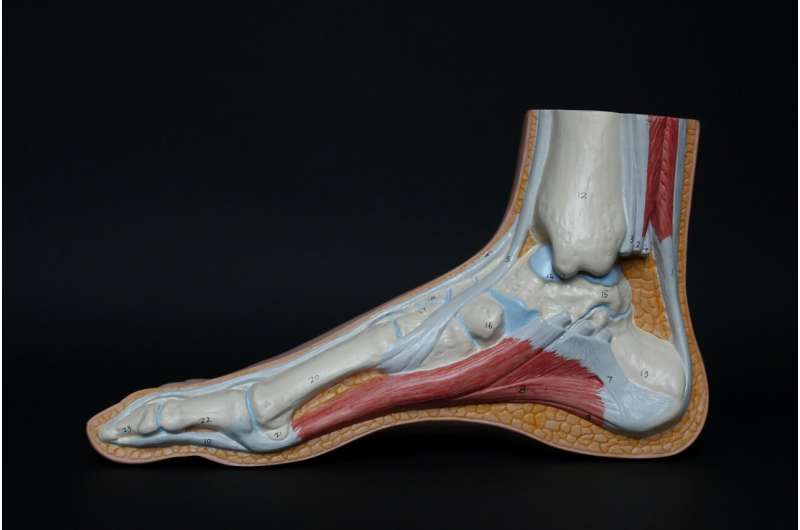Quick Foot Scan Could Prevent Amputation: A Breakthrough in PAD Detection

A new, rapid ultrasound-based method could enable early detection of peripheral artery disease, reducing the risk of foot ulcers and amputations with a simple, under-one-minute scan. Developed from existing ultrasound tech, this approach promises to transform PAD diagnosis and treatment.
Peripheral artery disease (PAD) often progresses silently, with many individuals unaware they have narrowing arteries in their legs. Initially, symptoms may be mild or mistaken for aging or fatigue, including occasional leg cramping or discomfort. As the disease advances, reduced blood flow hampers the healing of small cuts or wounds on the foot, which can develop into ulcers. If untreated, these ulcers may worsen, potentially leading to tissue death, infection, and in severe cases, the need for amputation.
PAD affects approximately 20% of people over 60 in the UK and is especially common among those with diabetes, high blood pressure, or kidney disease. It is closely linked to atherosclerosis—the buildup of fatty deposits in arteries—that also impacts the heart and brain, raising the risks of heart attack and stroke.
Early detection of PAD is vital because it allows for timely intervention, preventing severe complications. Currently, diagnosis often involves complex and expensive procedures like the toe–brachial index (TBI) test, which requires specific equipment and expertise that many clinics lack. This test compares blood pressure in the toe with that in the arm, but its reliability can be limited, especially in patients with stiff arteries or diabetes.
Innovative research is exploring whether standard ultrasound devices can be used for quick, non-invasive PAD screening. Using Doppler ultrasound, which is already common in many hospitals and clinics, blood flow patterns are assessed based on sound wave changes caused by blood movement. Researchers have developed a simple method where they analyze these sound waves to estimate the TBI quickly.
In trials involving patients with diagnosed PAD, this ultrasound-based approach predicted traditional TBI results with 88% accuracy, and it takes less than a minute to perform. The technique also effectively monitored treatment progress, such as after angioplasty, by reflecting improvements in blood flow. Moreover, the method works with basic pocket Doppler devices, making it accessible for widespread use.
Early detection facilitated by this method can significantly reduce the risk of severe outcomes, such as limb loss and cardiovascular events. Many cases are diagnosed too late, when limb-threatening ischemia has already set in. A simple, rapid, cuff-free ultrasound scan could transform PAD screening, especially in primary care and community settings, enabling earlier treatment and better patient outcomes.
Future efforts aim to automate and simplify this screening process further, making it possible for non-specialists to carry out assessments quickly, thus expanding early intervention efforts and saving limbs from unnecessary amputations. With early diagnosis and prompt treatment, the devastating impact of PAD can be mitigated, improving quality of life and survival rates.
Source: https://medicalxpress.com/news/2025-07-minute-scan-foot-amputation.html
Stay Updated with Mia's Feed
Get the latest health & wellness insights delivered straight to your inbox.
Related Articles
Study Reveals Lung Damage Is Not the Primary Cause of Persistent Infections in Cystic Fibrosis
New research shows that lung damage isn't the main reason for persistent bacterial infections in cystic fibrosis, highlighting bacterial adaptation and spread as key factors.
How Cells Prevent RNA Traffic Jams During Stress: New Insights from University of Michigan Research
Research from the University of Michigan reveals how cells prevent RNA traffic jams during stress by utilizing ribosome interactions, ensuring essential protein synthesis continues in challenging conditions.
Joe Biden Diagnosed with Advanced Prostate Cancer and Bone Metastasis: What You Need to Know
Joe Biden, at age 82, has been diagnosed with an aggressive prostate cancer that has spread to his bones. Learn about prostate cancer stages, treatment options, and the importance of early detection.
Senate Report Reveals 31% Reduction in U.S. Cancer Research Funding Under Trump Administration
A Senate report reveals a 31% reduction in U.S. cancer research funding during the first quarter of 2025 under the Trump administration, impacting grants, staff, and public health data, raising concerns over scientific progress.



